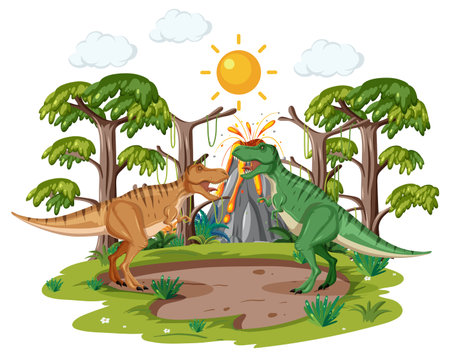Introduction: The Call of the British Outdoors
Beneath the ever-changing skies of Britain, a patchwork of rolling hills, ancient woodlands, and windswept coastlines quietly beckons. There is something undeniably captivating about the British countryside—a landscape that has inspired poets, artists, and adventurers for centuries. In every corner of the United Kingdom, from the misty valleys of Wales to the wild moors of Scotland and the gentle meadows of England’s heartland, nature trails and wildlife adventures await. Camping is more than just a pastime here; it is woven into the fabric of British culture, an age-old tradition cherished by families seeking both solace and excitement under canvas and stars. Today, there is a new generation answering the call: young explorers eager to trade screens for streams and living rooms for leafy dens. As this trend blossoms, UK campsites are becoming vibrant gateways for children to discover not only nature’s wonders but also their own sense of curiosity and adventure.
Exploring Classic Nature Trails Across the UK
The United Kingdom’s countryside is a tapestry woven from emerald forests, rolling hills, and windswept coasts. For young explorers, British campsites open up a world of adventure along some of the nation’s most cherished nature trails. From the storybook fells of the Lake District to the dramatic cliffs along the Cornish coast, each trail embodies a different facet of the UK’s natural beauty and its long-standing love affair with “a good ramble.”
Trail Diversity: Where Every Step Tells a Story
Walking through these landscapes isn’t just about exercise—it’s about discovery. Children learn to identify wildflowers in Sussex woodlands, listen for skylarks on Yorkshire moors, and peer into rock pools along Dorset’s Jurassic Coast. Each path offers a sensory feast, inviting curiosity about everything from ancient trees to elusive wildlife.
Top Classic Trails for Families
| Region | Trail Name | Highlights |
|---|---|---|
| Lake District | Catbells Lakeland Walk | Panoramic views, heather moorland, red squirrels |
| Cornwall | South West Coast Path | Dramatic cliffs, sea birds, secret coves |
| Yorkshire Dales | Malham Cove Trail | Limestone pavements, wildflowers, peregrine falcons |
| The Cotswolds | Cotswold Way | Quaint villages, ancient beech woods, butterflies |
| Kent | White Cliffs of Dover Path | Breathtaking seascapes, chalk grassland species |
A Distinctly British Outdoor Tradition
The tradition of rambling is deeply rooted in British culture—a gentle meander with friends or family, punctuated by flask tea breaks and perhaps a stop at a local pub. Campsites often provide easy access to these trails, making it simple for families to immerse themselves in the landscape. Whether skipping stones by a lakeshore or sharing stories beneath ancient oaks, these classic trails offer both wonder and connection—an invitation for young explorers to fall in love with Britain’s great outdoors.

Wildlife Spotting: From Hedgehogs to Red Deer
Strolling quietly through dew-laced meadows or pausing beside ancient woodland, young explorers at UK campsites are often greeted by a magical cast of wild residents. The thrill of spotting a hedgehog snuffling through the undergrowth or glimpsing the elegant leap of a red deer at dawn fills every heart with wonder. Here, in these green sanctuaries, children learn not just to observe, but to marvel.
Every rustle in the bracken or flutter in the canopy invites curiosity: could that be a playful fox cub on an evening prowl, or perhaps a shy badger emerging at dusk? In spring, the melody of songbirds—robins, wrens, and blackbirds—fills the air, each note weaving a tapestry of discovery. For those with patient eyes, even tiny creatures like ladybirds and wood mice become enchanting highlights along winding nature trails.
At many UK campsites, rangers and guides share their wisdom about local habitats, teaching children how to track animal footprints in soft earth or identify owl calls echoing beneath starlit skies. This gentle guidance encourages respect for all creatures, great and small. Young campers soon understand that wildlife watching isn’t about chasing or capturing; it’s about quiet observation and heartfelt appreciation.
Such encounters nurture empathy and responsibility. Children are gently reminded to tread softly and leave no trace, ensuring future generations may also encounter these treasured animals. Each sighting becomes a cherished memory—a reminder that adventure is not always about conquering mountains, but sometimes about kneeling close to the earth to witness its quiet miracles.
4. Cultivating Curiosity: Activities for Young Adventurers
Immersing children in the great outdoors at UK campsites offers countless opportunities to awaken their sense of wonder. By weaving creative and educational activities into days spent among ancient woodlands, rolling meadows, or heather-clad moors, we can nurture a lifelong affection for Britain’s wild places. Here are some inspiring ways to encourage young explorers to look closer, listen harder, and cherish the natural world.
Scavenger Hunts: A Quest for Hidden Treasures
Organising a classic British scavenger hunt transforms a ramble through bluebell woods or along riverbanks into an exciting quest. Provide children with a list of items to find—such as a glossy chestnut, a feather from a wood pigeon, or the delicate skeleton of a sycamore leaf. For added excitement, include challenges that ask campers to spot quintessentially British creatures like the elusive red squirrel or the cheerful robin.
| Item to Find | British Reference | Skill Developed |
|---|---|---|
| A conker (horse chestnut seed) | Autumnal woodland walks | Observation |
| A snail shell | Mossy corners and damp hedgerows | Attention to detail |
| A sprig of wild thyme | Chalk grasslands and South Downs | Scent recognition |
| A robin’s song | Morning chorus in British gardens | Listening skills |
| Fox tracks in mud | Countryside paths after rain | Tracking and inference |
Flora Identification: Learning from Hedgerows and Heaths
Beneath the vast skies of Exmoor or along Yorkshire’s drystone walls, Britain’s flora offers endless intrigue. Equip little adventurers with pocket field guides or laminated cards featuring native plants—like foxglove, bramble, or stinging nettle. Encourage them to note leaf shapes, textures, and scents as they wander. This activity not only sharpens observation but also instils respect for the countryside’s rich biodiversity.
Favourite British Flora to Discover:
- Bluebells: Seek out carpets in ancient woodlands each spring.
- Cow parsley: Spot these frothy white flowers lining rural lanes in early summer.
- Bramble: Forage for blackberries come late August on sun-warmed hedges.
- Sorrel: Find this tangy-tasting leaf in meadows and add it (with guidance) to a wild salad picnic.
- Mosses & Lichens: Peer closely at tree trunks and stone walls for these miniature worlds.
Sparking Lifelong Curiosity Through Playful Exploration
The best adventures are woven with storytelling—invite children to invent tales about the secret lives of woodland creatures or the journeys of fallen leaves down winding brooks. Use simple tools like magnifying glasses or sketchbooks to record discoveries, encouraging both scientific curiosity and artistic expression. With every muddy boot print and newfound treasure, young explorers at UK campsites are gently guided towards a deeper love for nature—a gift that will last long after tents are packed away.
5. Tales by the Campfire: Storytelling and Reflection
As dusk settles gently over the British countryside, there is a hush of anticipation around the campfire—a timeless ritual that weaves young explorers into the rich tapestry of UK camping culture. Here, beneath a canopy of ancient oaks and twinkling constellations, children gather shoulder to shoulder, their faces aglow with firelight and wonder. The air is tinged with woodsmoke, laughter, and the lingering scent of toasted marshmallows—a sensory symphony unique to British campsites.
This is where stories come alive, passed down from seasoned leaders or spun spontaneously by adventurous souls fresh from their day’s ramble along nature trails. Tales of local wildlife—of clever foxes glimpsed at twilight or mysterious badgers rustling in the undergrowth—spark imaginations and connect young campers to the land’s folklore. Sometimes, it’s tales of bravery and mishaps on muddy footpaths or whispered dreams of faraway places, all shared under the vast night sky.
The British campfire tradition is not just about entertainment; it is a gentle invitation for reflection. As embers glow and shadows dance, children are encouraged to share their own experiences—the thrill of spotting a red kite soaring overhead, the pride in identifying wildflowers along a winding path, or simply the joy found in friendship forged outdoors. In these quiet moments, confidence blossoms and bonds strengthen, nurturing a sense of belonging that lingers long after the last log has smouldered.
For many young explorers, these evenings become treasured memories—a mosaic of warmth, adventure, and connection. The crackle of the fire provides a comforting soundtrack as stories unfurl into dreams. Under an endless British sky, they discover not only the wonders of nature but also the magic within themselves and each other.
6. Nurturing Tomorrow’s Nature Lovers
There is something quietly magical about watching young explorers wander through the lush tapestry of the British countryside, their eyes wide with wonder as they discover a world teeming with life and stories. Inspiring this deep, lasting bond between children and nature is not simply about adventure—it’s an invitation to become stewards of a landscape shaped by centuries of heritage and wild beauty. When little feet tread softly along ancient woodland trails or pause to listen to the chorus of birdsong at dawn, they are not just visitors; they are future caretakers.
At campsites across the UK, fostering this connection means more than identifying wildflowers or spotting a red squirrel; it’s about encouraging curiosity, empathy, and respect for every hedgerow and rolling meadow. These shared moments—lighting a campfire under the stars, or learning to tread lightly on mossy paths—plant the seeds of sustainability. Children come to understand that every wild space is precious and fragile, deserving of protection and thoughtful care.
Through mindful camping traditions such as Leave No Trace principles, responsible wildlife watching, and supporting local conservation efforts, we teach our young explorers that their actions ripple outward. The British countryside becomes not just a backdrop for play but a living classroom—a place where memories are made and values are sown.
As dusk settles over the campsite and laughter echoes beneath oak canopies, we’re reminded that nurturing tomorrow’s nature lovers begins today. Every story told beside a crackling fire, every small act of kindness towards the land, ensures that future generations will inherit not only the beauty of Britain’s wild places but also the wisdom to cherish and protect them.


